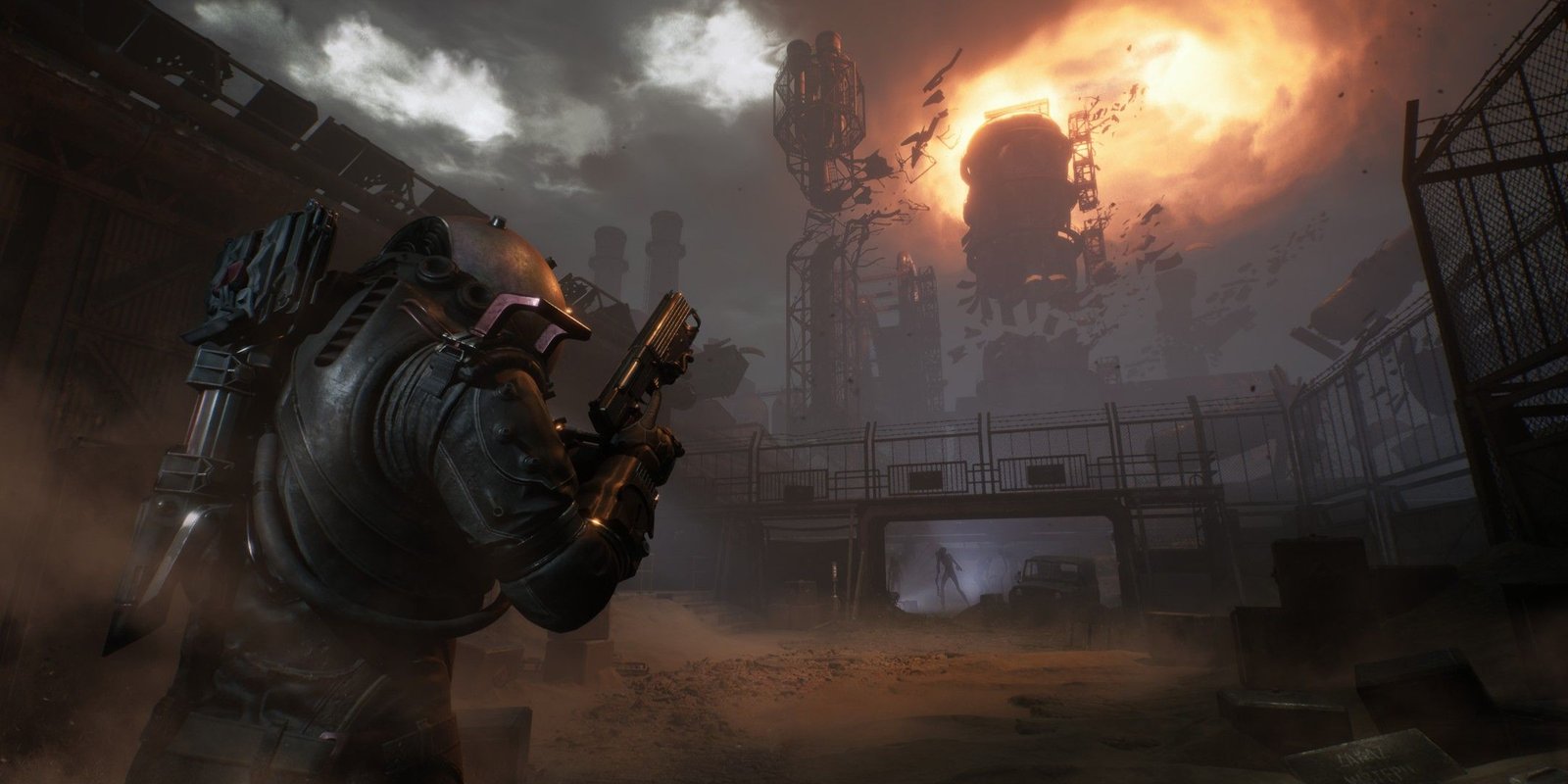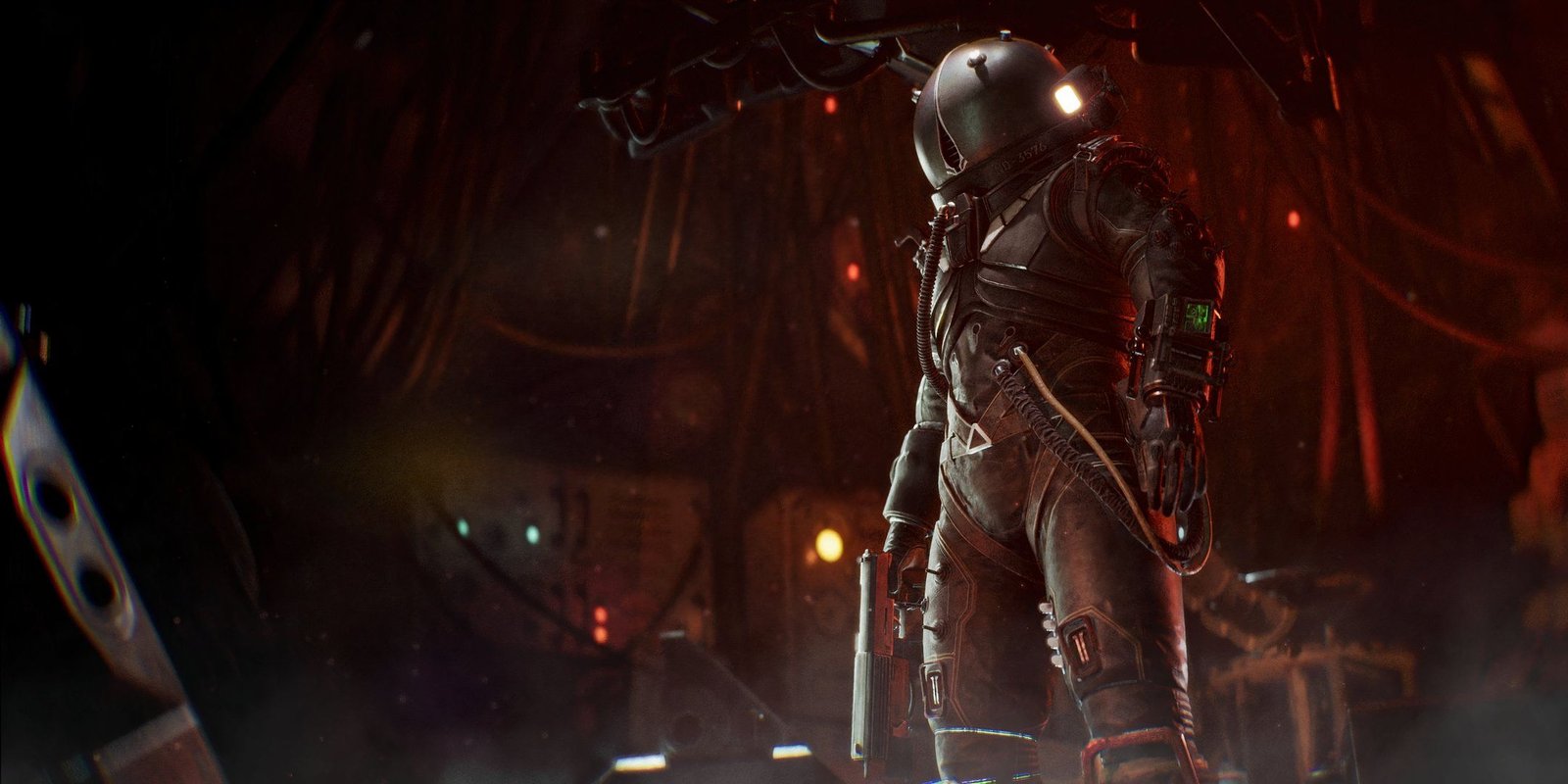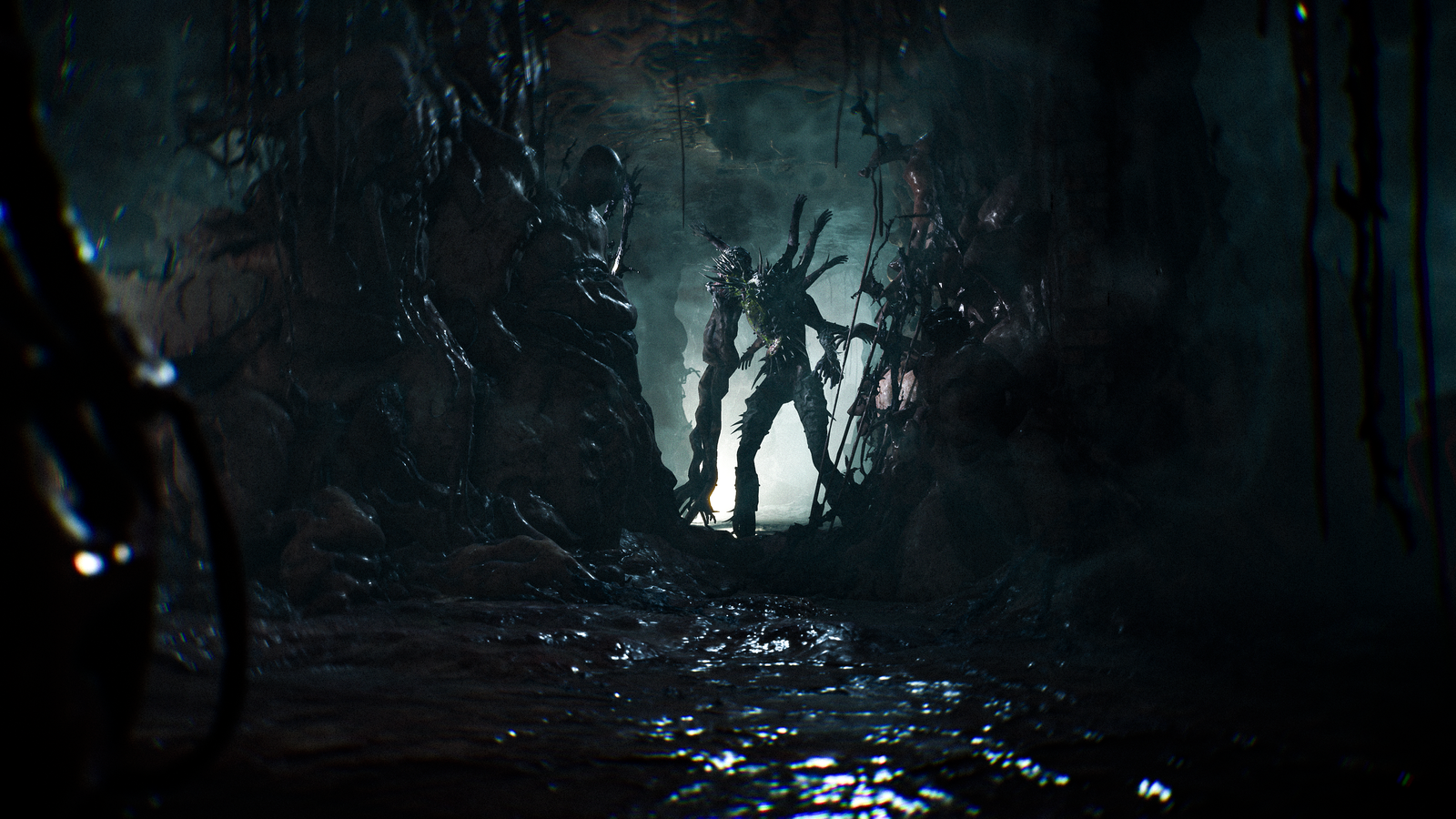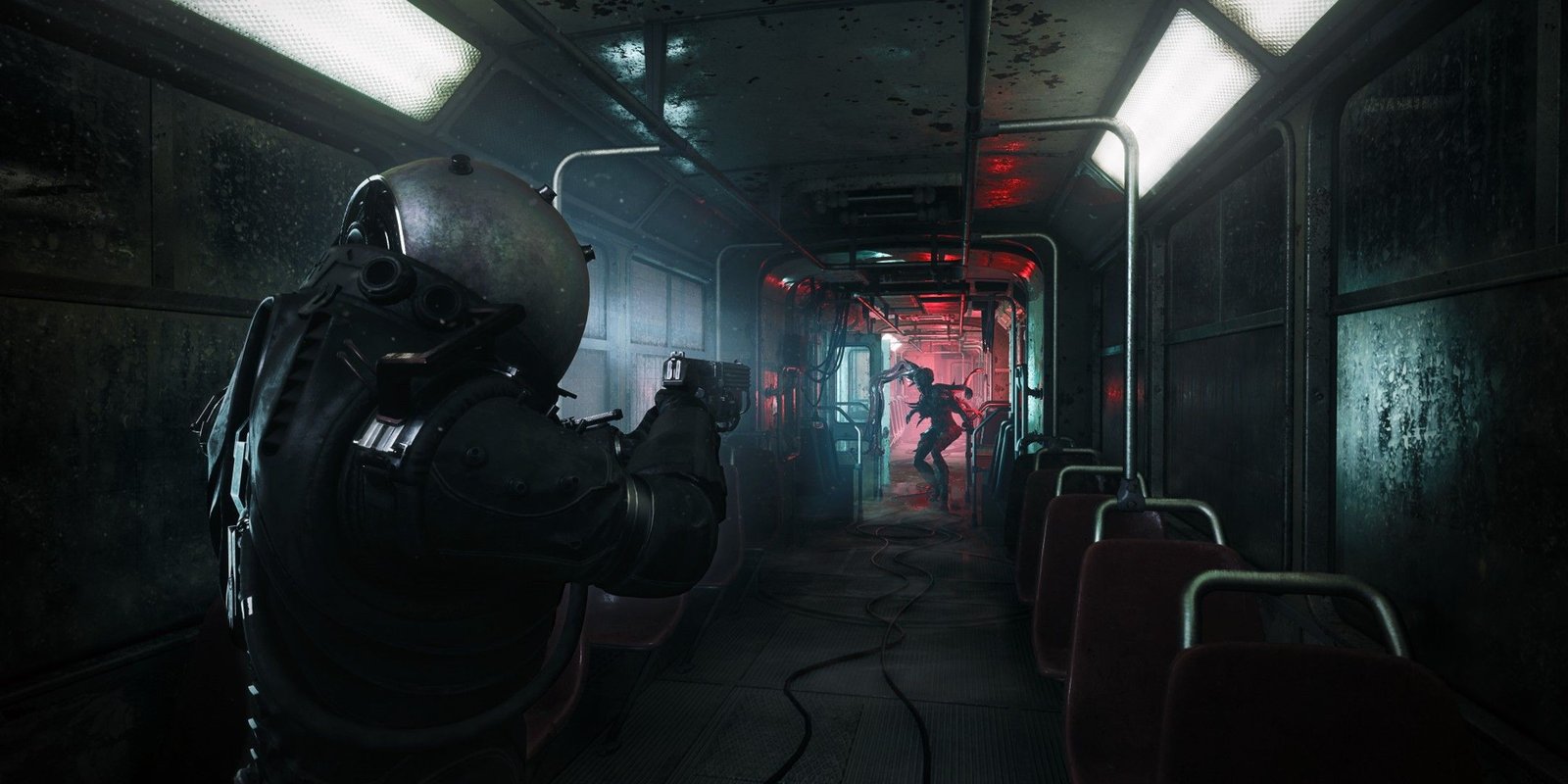Over the past console generation, only Capcom can rival the relentless horror game output of Bloober Team. In the last decade alone, the Polish studio has been involved in several different franchises, from original games like The Medium and Layers of Fear, alongside its interpretations of beloved properties like Blair Witch and, most importantly, Silent Hill.
Ever since the Silent Hill 2 remake launched last year and showcased how Bloober has stepped up, everyone has been waiting to see what follows such a groundbreaking moment for the team. As revealed earlier this year, that game will be Cronos: The New Dawn, a brand-new original IP that I went to go hands-on with earlier this month, and came away very impressed with.
PREVIEW LINK HERE
Bloober may have proven the naysayers wrong with Silent Hill 2, but Cronos: The New Dawn is its chance to take everything it’s learned and apply it to something completely original without the weight and expectations of an already iconic franchise.
Cronos Was Born Out Of Two Completely Separate Concepts
Instead, the weight of Cronos comes from it being a new IP, which is a gamble considering the current state of the industry. Despite how much pressure there is when it comes to starting a new series, the leads behind Cronos: The New Dawn are excited about what they’ve put together.
“We are feeling really privileged because these are dark times for the industry,” Cronos co-director and designer Wojciech Piejko tells me. “We see all the layoffs and even hear from friends from different companies. So we feel like, wow, we’re getting to make this crazy game right now. So it’s a dream come true for us. Of course, we still want to push forward. As a horror player, I’m always saying to myself, ‘Wow, if I saw this game I’d be so fu**ing hype’.”
Despite only having been announced late last year and set for release before 2025 is over, Cronos: The New Dawn has been in development for more than four years, co-director and producer Jacek Zieba confirms. Concepting began in 2021, and Cronos was born from two completely different ideas combined into one.
As a horror player, I’m always saying to myself, ‘Wow, if I saw this game, I’d be so fu**king hype’. – Wojciech Piejko
“Our boss gathered us and said to figure out what we want to do next,” Zieba says. “At this moment, we knew that Silent Hill was set, so we figured out what second game we’d be doing. He divided us into different teams – we were mainly working together, but at that time, we were divided and came back with two different ideas.
“One was about a housing project, a strange disease, and morphing people like The Thing, but set in Poland. The second was about diving in time, extracting people, and so on. It was a question of which of them was better, and we looked at each other like, ‘Why not do both? Why not merge them?’”.
As we now know, the end result was Cronos: The New Dawn, which took the Polish setting, strange disease, and The Thing inspirations and melded them with the time travel and extraction mechanics for a unique new IP that Piejko says is the game he has always wanted to make.
Bloober’s Two Teams Made Sure Cronos Learned From Silent Hill
As Zieba alluded to, Bloober Team is made up of two main development groups, which is how the studio can have multiple different projects in the works at once. Some members of those teams, such as directors, stay focused on one game at a time, while others are able to hop between projects and share what they’ve learned, which likely means Silent Hill 2 developers have had a hand in shaping Cronos.
Piejko tells me that Bloober’s developers tend to jump between projects as one is ending, ensuring that things are always progressing smoothly. Since one team seems to be working on the Silent Hill remakes, that means Bloober’s other developers had a bit more freedom when coming up with what kind of game they wanted to do next.
“From the get-go, we knew that the second team was doing the Silent Hill 2 remake, so we didn’t want to overlap,” Piejko says. “So we were like, let’s do sci-fi and a little bit more action-oriented. We often say we are cooking two pizzas, but with different toppings.”
Despite The Similarities, Dead Space Wasn’t Cronos’ Main Inspiration
Although one of the most interesting things about Cronos is that it’s an original game following on from a massive success from a well-known IP, Zieba and Piejko were still inspired by several different horror staples during development. Silent Hill and Resident Evil are the obvious ones, but there was an elephant in the room I was quick to ask about.
Cronos’ science-fiction backdrop, horrifying and fleshy monsters, and inclusion of an all-too-familiar stomping mechanic all made Dead Space seem like one of the biggest influences for the game. As it turns out, though, that’s not really the case, although Bloober does recognise why the comparisons are being made.
“Dead Space is there, but you need to remember that before Dead Space, it was Resident Evil 4,” Zieba points out. “Resi 4, Resi 2, both the original and remakes, Resi 3 – they connect because they’re all old-school with more action. We hear a lot about Dead Space and, yeah, of course we played Dead Space. There are some connections there, but we look more into Resi 4 than Dead Space.”
After going hands-on with Cronos, I still think Dead Space is its closest comparison, even if that’s not deliberate. Maybe I just miss Isaac too much.
It wasn’t just big survival horror games that influenced Cronos’ development and tone, though, as Piejko and Zieba also shared a few noteworthy movies and series whose DNA can be felt in The New Dawn. The Thing is an obvious one that even popped into my head as I played, but there’s an unexpected pick that seems to have made even more of an impact on development.
“John Carpenter’s The Thing is a big inspiration for us, and so is Dark, a Netflix series about time travel,” Piejko reveals. “For us, it’s like a survival horror game crossed with Dark, thanks to the time travel and history of a group of people that you will also be able to explore in later parts of the game. [Dark] was also set in Europe, so that was a heavy inspiration for us.”
Bloober Hopes That Cronos’ Merge Mechanic Is Its Defining Feature
Of course, while Bloober was inspired by a number of different things, The New Dawn brings plenty of its own ideas to the table. The biggest of these is merging, a key mechanic that the Orphans, Cronos’ signature monsters, can use to suck the life out of dead enemies and absorb their abilities.
Beyond being suitably gross and unnerving for a survival horror, merging adds a completely different pace to Cronos’ combat, as players must choose whether to tactically get rid of bodies with a limited-use flamethrower or try to take down Orphans as quickly as possible to not even give them the chance to absorb. It’s arguably the main thing that sets Cronos apart from its peers or inspirations, and that’s very purposeful.
“Everything is built around it,” Zieba notes. “In the case of combat, that’s the most important ingredient, and we pushed from the get-go that it needs to be the main part. At the beginning, in prototypes, they could eat each other and grow very big, too big to fit through the doors, so they were just too powerful.”
Although the current version of Cronos doesn’t let Orphans grow to ridiculous, game-breaking sizes, Zieba confirmed that there are four stages to the process, which even includes different enemy types gaining one another’s attributes, like spitting acid and growing armour. Beyond that, Orphans can merge with dead enemies, but they’ll only regain health, which was done so that the game wouldn’t be too challenging while still giving it a unique feature.
“We were looking for something that would distinguish our game,” Piejko says. “You mentioned Dead Space, like cutting off the limbs – Alan Wake and using the flashlight, something that would create our own take on survival horror. The first spark was The Thing. Of course, most of them aren’t merging there, but this alien organism is changing them, and you don’t know who is sick and who is not. That was one of the first thoughts that led us here.”
At the beginning in prototypes, they could eat each other and grow very big, too big to fit through the doors, so they were just too powerful. – Jacek Zieba
Merging is the big poster child feature for Cronos: The New Dawn and one that I saw plenty of in my preview, but it’s not the only original core mechanic. As teased in the original reveal trailer, the Traveler’s goal in the game is to jump back in time and extract the souls of important figures to try and bring them back to the future and help rebuild the world.
Even though I wasn’t able to try out extracting and see what kind of impact it has on Cronos, Piejko and Zieba were eager to share more details about it, even calling those moments “some of the most important” in the whole game and something that players are thinking about from the very beginning all the way to the end.
During her jumps into the past, the Traveler can rescue souls and store them in her suit until she finds her way home. Those souls will comment on what’s going on in the game, and even have unique interactions depending on their experiences in the world, such as visiting a location they have a past with. Each soul also has its own gameplay perk, like letting you deal more damage to enemies on fire, which Piejko calls the “cherry on top” of the upgrade system.
“The people that you’re extracting are now trapped in your suit for some time, and you can only carry three souls with you,” Piejko points out. “Sometimes you’ll need to make tough decisions. For example, you might need a soul for some information, but you’ve already got three souls, so you’ll need to erase someone to get someone else. We’re pushing for decisions. Will you take someone because you’re pragmatic and you like the perk, or because you just like this character?”
As well as hopefully giving the player some tough decisions to make about who they want to carry on the adventure with them, the extraction mechanic was also added to the game to increase replayability, as it essentially lets you create your own build and see different sides to the story. In typical Bloober fashion, Zieba also notes that replaying the game will give you a new understanding of its plot that you might not get the first time around.
I think we’re good at creating universes, so we would love Cronos to become a bigger franchise. – Jacek Zieba
Playing Cronos: The New Dawn was enough to convince me that it’s going to be one of Bloober’s defining projects, but talking to the developers really highlighted just how much passion and creativity have gone into it. It’s a world that Bloober has clearly wanted to bring to life for some time and, if it’s the success that it’s shaping up to be, Zieba confirms that we might even see more of The Traveler in the future.
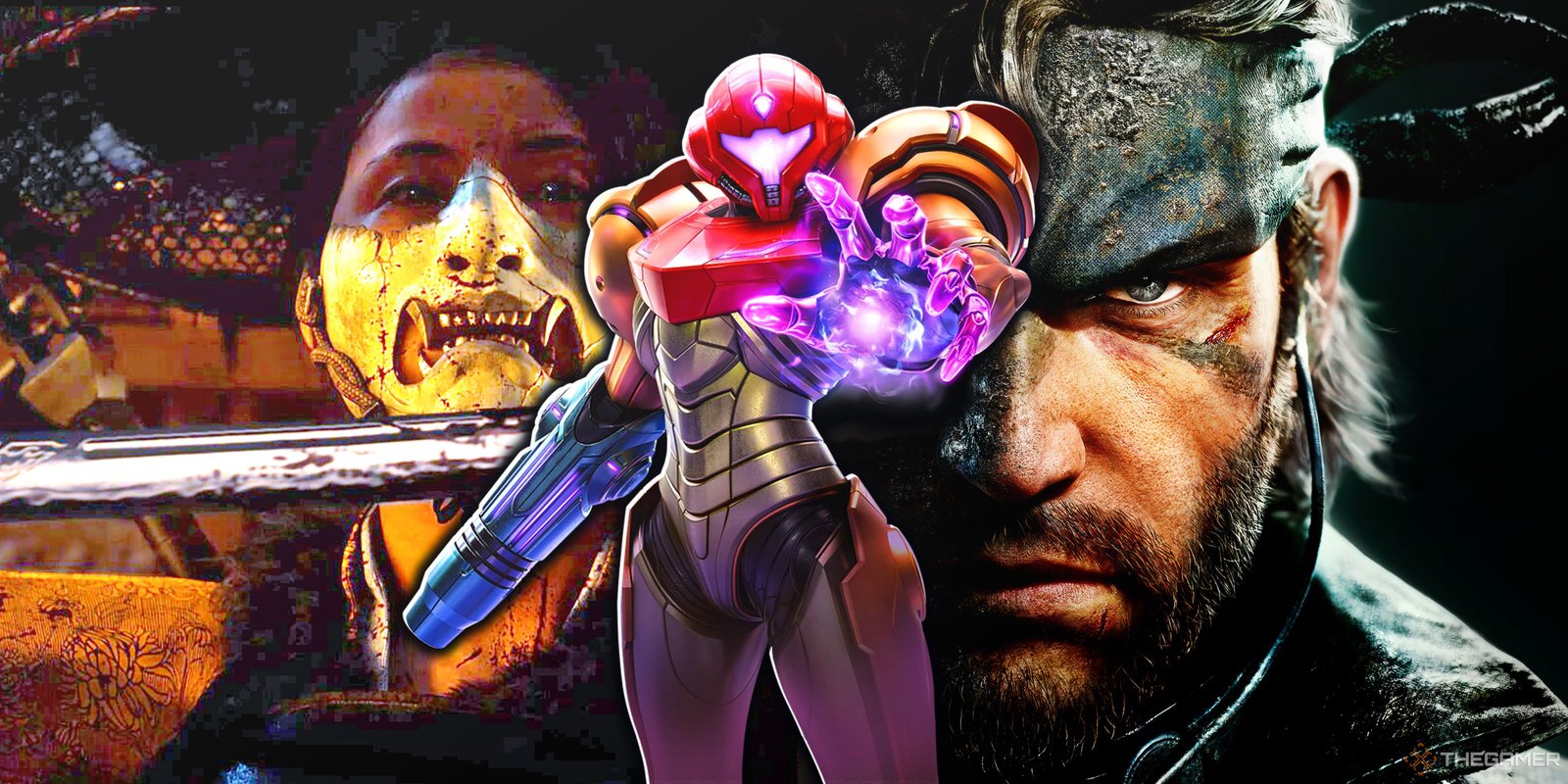
Next
What Games From The Second Half Of 2025 Have A Shot At GOTY?
The first half of the year has given us some major contenders, but what’s left to play?
